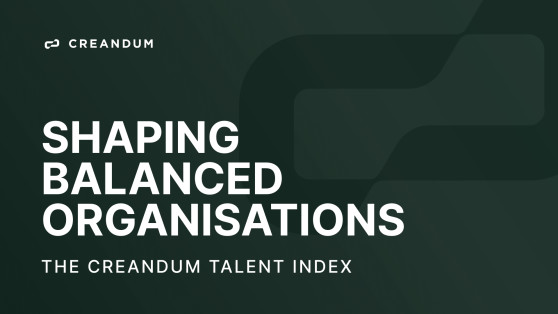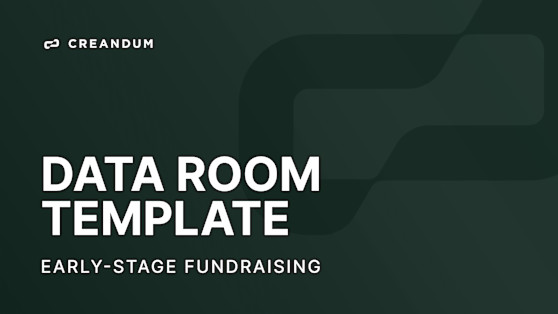Fundraising 101: the Outreach Template
Planning your fundraising wasn’t the top priority on most founders’ to-do lists in 2020 and 2021. Why? Because you didn’t need to. Many companies simply needed to show up to get a term sheet. Things have changed in more recent times. Even if the market picked up again at the end of 2023, it was still a year marked by bridge rounds and a halt in growth investing. How you ran the fundraising process had a much bigger impact on your result, and once again became top of mind.
So what does 2024 have in store? No one knows. But likely fundraising will not look the same as back in 2021. If you aren’t an AI company (or part of which every hype-cycle is ongoing at this point) it’s good to prepare yourself and your company to increase your chances of success.
There are many aspects of how you set yourself up for success; the right deck, great materials, and combining it all in a kick-ass data room. However, in this article we will not focus at all on materials but rather on the process, and more specifically how to tranche your outreaches to investors. This might sound like a trivial problem. Should I not just email all of the funds I like and set up calls? That is indeed one way to do it and for some, I am sure it works out well. But for the most part, it is better to have a concrete plan on who you reach out to and when and what to do if your first set of outreaches is not successful. So in this article, I will share a template that you can copy and use for outreach planning, and then also go into more detail on how to think about the different stages of the outreach process.

Creandum Outreach Template
Populating the template
List all the funds you have been in touch with If you have been in touch with investors from funds before, dig up who they were and when the interaction took place. Adding those who reached out to you but you didn’t meet is also a great starting point. All these funds have shown some interest which is the best starting point for a conversation.
List all remaining relevant funds After this, go ahead and add other funds that you think could be relevant to your stage and business. Relevant funds are those that are specific to your stage, cover your industry, and invest in the geo you are based in. Here are some lists that could be useful to look at when pinning these down.
Make a gross list first: After all, fundraising is a numbers game and you only need one ‘yes’ in the end.
Categorize the funds by priority Now you hopefully have a gross list of 30-40 funds that could be relevant. The next step is to prioritize based on how much you want to work with them. If you know the fund from before this is easier, otherwise try to decide based on if they seem to have a specialization around investing in businesses at your stage of growth, industry, etc. All the “prio 1s” should be funds that you would be happy to have on your cap table.
The priorities should be different for every founder and should include what you know about the fund, the support they can provide, if they have more companies in your area, and how they work with their portfolio. The brand could be one that you take into consideration but it is rarely the full story and the more you know about each fund outside of a flashy website the better you can make these priorities.
Make a schedule for tranching the outreaches
After this, start tranching the outreaches in groups. You can’t reach out to 30 funds at once; even doing 20 in parallel is difficult. Start with 10-12 and then take it from there. Depending on the funding environment, who you want to start with might differ.
A suggestion is to start with funds you know from before + prio 2, and after you have had a few of these, reach out to 4-5 of the prio 1 funds. That way you have some friendly conversations early on, you get to work on the pitch, and best case you get a term sheet from an early conversation that you can then use to add momentum in the process with some prio 1 funds.
Find suitable intros to the funds you didn’t know from before When you have created the tranches you need to find the contact information/intro to the relevant funds. Cold outreaches can work but if you get a warm intro, even better. One way to use funds that passed early on in the process could be to ask for intros to other funds in your list. Many VCs are happy to try to make that happen. Another way to do is it to work on relationships with other founders in the portfolio of that fund. There is no better way than to catch the attention and get a genuine intro than if it comes from within the VCs own “family”. Later down the line in the process you can also leverage this individual to learn more about how to present well in IC etc.
When all of these things are completed you have successfully prepared your outreach plan! Kudos to you! Now onto the next step: the actual fundraising process.
The hardest part about fundraising: Your own emotions
Now you are hopefully ready with both the right materials prepared (for a detailed guide see our Seed Dataroom template) as well as the outreach plan. But what about the actual process? What are some tips and tricks to successfully navigate your own and other people's emotions and opinions? This is normally where a VC/Angel/Other previous investor would be helpful as you can use them both as a sounding board and a shoulder to cry on. If you don’t have someone like this on your cap table, we have collected some of the best suggestions from our portfolio founders on what they did to arrive safe and sound at the other end of the fundraising journey.
Max Linden, founder of Lemon Markets:
Build momentum. Investors (especially in groups) have a tendency to act irrationally. If a fundraise is timed well, you have good news coming out or your numbers are improving month over month. Combined with positive feedback loops from your network, press articles or other achievements, this can help you build FOMO, which even in 2024 makes people move fast.
Remind yourself daily, it only needs one yes. Fundraising is emotionally draining: lots of calls and high pressure can really wear you down. Focus on getting to the first yes, as it turns the power dynamic in your favor from ‘if’ to ‘how’. As long as you aren’t there, grind it out and show resilience (easier said than done)
Actively seek feedback. You are in this for the long run, so it is very healthy to view investor relationships as such as well. Especially when an investor declines, set up a brief feedback call to collect their most important points - this way you can address these concerns in the next conversations proactively and showcase how you value their input.
Nicolas Benady, CEO @ Swan:
Timing. Listen to your existing investors; they know better about whether you are in a position to raise or not and when
Be strong. In 2024, you should only consider fundraising when you feel exceptionally strong. We felt strong because we knew our product had a solid reputation. And we knew we had solid numbers.
Be prepared. The data room, the pitch deck, the organization: everything has to be perfect. We began preparing everything five months prior to launch and dedicated a whole week to an offsite retreat to minimize distractions.
Juraj Masar, CEO @ Better Stack:
Manage energy. You need to manage your time and your energy. Don’t schedule more than 4-5 important meetings/calls per day and schedule important calls in the morning while you’re fresh.
Move fast. Reply to emails as soon as you read them. Better done than perfect.
Delegate. Since you need to dedicate all your attention to fundraising, you won’t have enough time to focus on managing the company the best way you could. That’s OK. Plan for it and delegate ahead of time.
Casper Rasmussen, CEO @ Monta:
Right reasons. First of all, be 100% sure you're raising for good reasons, and that you absolutely believe in the path you want investors to share with you.
Plan ahead. Then, organize your time, because those meetings are a draining experience and you want to be sure you give your very best. During this time, admit you won't be able to be full-time CEO and organize accordingly, delegating 80% of your work to that great team you built there.
Have fun! And, most of all, learn to enjoy the process! It's heartwarming to have investors interested in your company, and you should build and carry confidence from it. They're open to discussing. You built a legitimate business. You'll make it.
We hope you found this template useful; there's lots more content like this to discover in the 'Resources' section of our Stories page.
Article written by Principal, Beata Klein - follow her on X; connect with her on LinkedIn.

